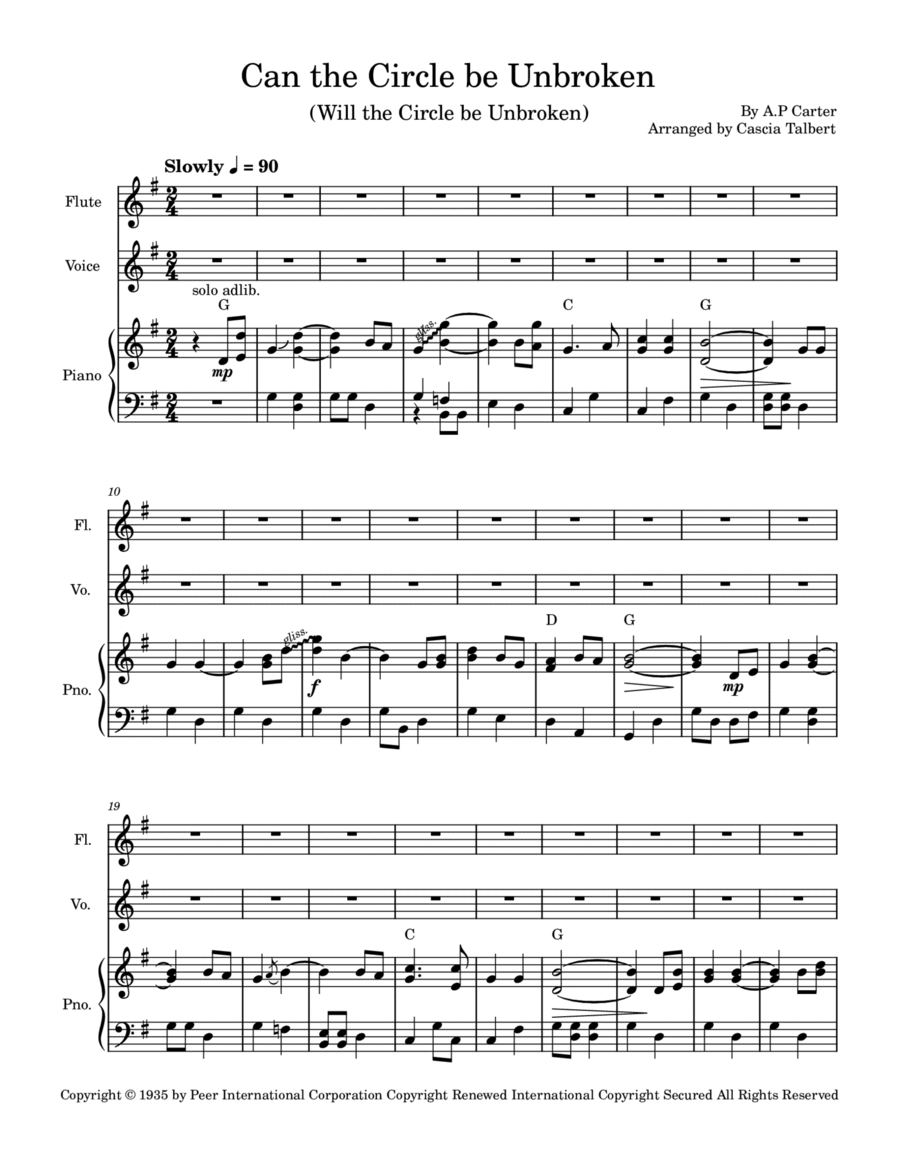Piano,Vocal,Voice - Level 4 - Digital Download SKU: A0.1414977 By Nitty Gritty Dirt Band. By A.P. Carter. Arranged by Cascia Talbert. Christian,Country. Score. 24 pages. Cascia Talbert #996710. Published by Cascia Talbert (A0.1414977). Can the Circle Be Unbroken (By and By) is a country/folk song reworked by A. P. Carter from the hymn Will the Circle Be Unbroken? by Ada R. Habershon and Charles H. Gabriel. The song's lyrics concern the death, funeral, and mourning of the narrator's mother.The song first gained attention due to the Carter Family. The song has been recorded by many groups and musicians: Blind James Campbell, Bob Dylan, The Band, The Staple Singers, Clara Ward Singers, John Fahey, Roy Acuff, Joan Baez, The Chieftains, Jerry Lee Lewis, Gene Vincent, Ralph Stanley, The Black Crowes, Kristin Hersh, John Lee Hooker, Bill Monroe, the Nitty Gritty Dirt Band, Pentangle, Spacemen 3, Country Joe McDonald, John Statz, Spirit of the West with The Wonder Stuff, Mavis Staples, The Felice Brothers, Johnny Cash, Gregg Allman, the Neville Brothers, Jeff Buckley, Moby, and Agnes Chan. Its refrain was incorporated into the Carl Perkins song Daddy Sang Bass and the Atlanta song Sweet Country Music. It is primarily performed in gospel, bluegrass and folk, but versions in other genres exist. Most versions of the song use the alternate title Will the Circle Be Unbroken. In 1998, it was inducted into the Grammy Hall of Fame.This arrangement is for flute, voice and piano.
